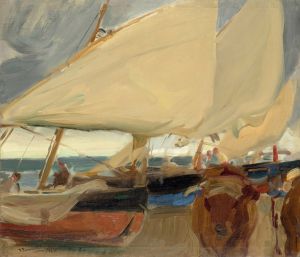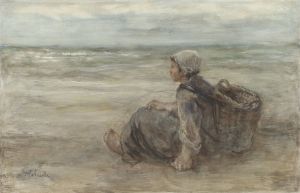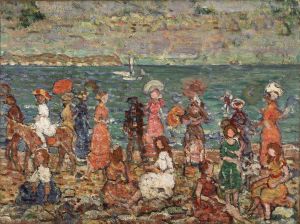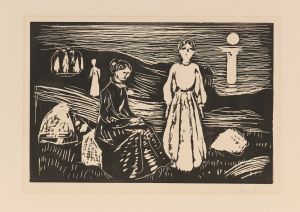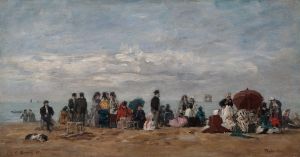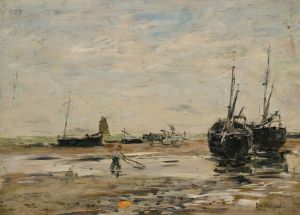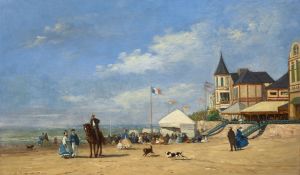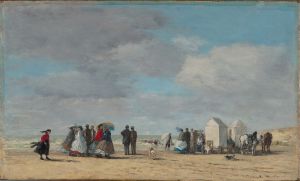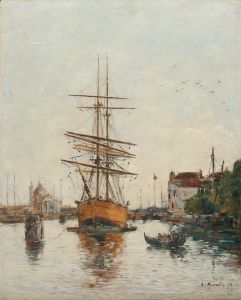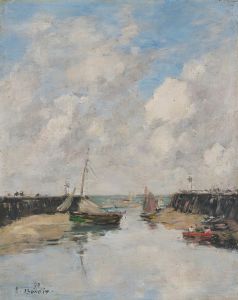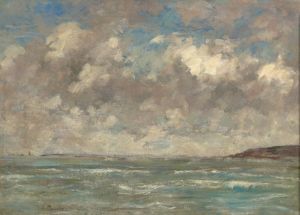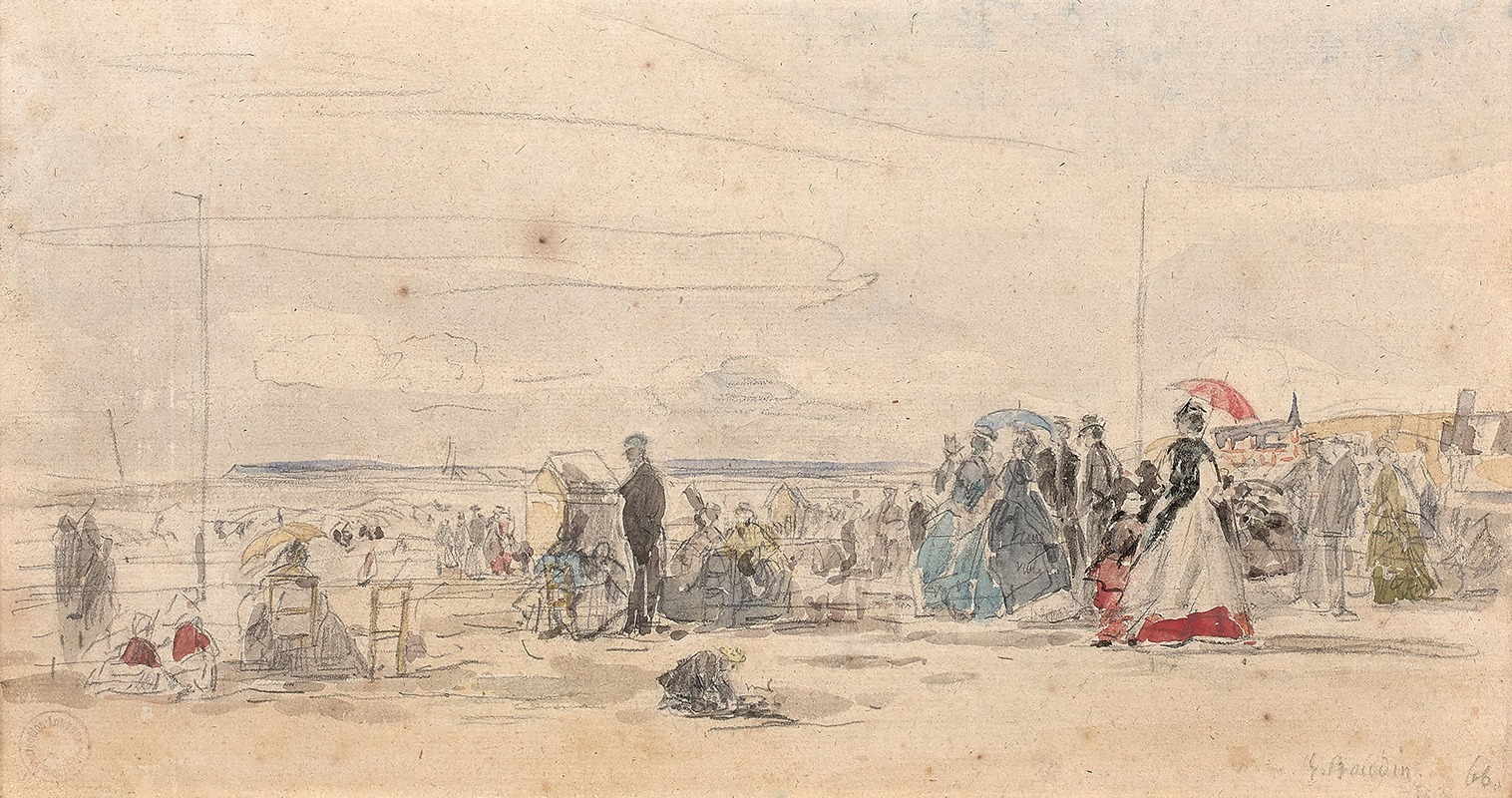
Scène de plage à Deauville
A hand-painted replica of Eugène Boudin’s masterpiece Scène de plage à Deauville, meticulously crafted by professional artists to capture the true essence of the original. Each piece is created with museum-quality canvas and rare mineral pigments, carefully painted by experienced artists with delicate brushstrokes and rich, layered colors to perfectly recreate the texture of the original artwork. Unlike machine-printed reproductions, this hand-painted version brings the painting to life, infused with the artist’s emotions and skill in every stroke. Whether for personal collection or home decoration, it instantly elevates the artistic atmosphere of any space.
Eugène Boudin's Scène de plage à Deauville (Beach Scene at Deauville) is a painting created by the French artist, who is widely regarded as one of the precursors of Impressionism. Boudin, born in 1824 in Honfleur, France, is celebrated for his depictions of coastal scenes, particularly those featuring beaches, skies, and the leisure activities of the bourgeoisie. His works often capture the interplay of light, atmosphere, and human activity, and Scène de plage à Deauville is a notable example of this focus.
The painting portrays a beach scene in Deauville, a fashionable seaside resort in Normandy, France, which became a popular destination for the French upper class during the 19th century. Deauville's beaches, with their elegant promenades and vibrant social life, provided Boudin with ample inspiration for his work. In this painting, Boudin depicts a group of figures, likely vacationers, enjoying the seaside. The composition reflects his characteristic style, with a focus on the expansive sky dominating the scene, a hallmark of his oeuvre. The figures are rendered with loose, fluid brushstrokes, emphasizing the fleeting nature of the moment rather than precise detail.
Boudin's technique in this work demonstrates his mastery of plein air painting, a method of working outdoors to capture the effects of natural light and atmosphere. This approach was influential in the development of Impressionism, and Boudin's work had a significant impact on younger artists, including Claude Monet, who once referred to Boudin as his "master." The painting's palette is soft and harmonious, with subtle variations in blues, whites, and earthy tones, evoking the breezy, tranquil ambiance of the seaside.
While the exact date of creation for Scène de plage à Deauville is not specified, it is consistent with Boudin's prolific output of beach scenes during the 1860s and 1870s. During this period, he frequently traveled along the Normandy coast, capturing the leisurely activities of the era's social elite. His works from this time are celebrated for their ability to convey both the grandeur of nature and the charm of human interaction within it.
Today, Boudin's paintings, including Scène de plage à Deauville, are held in high regard and can be found in major art collections and museums around the world. They continue to be appreciated for their innovative approach to landscape painting and their role in the transition toward modern art movements.





